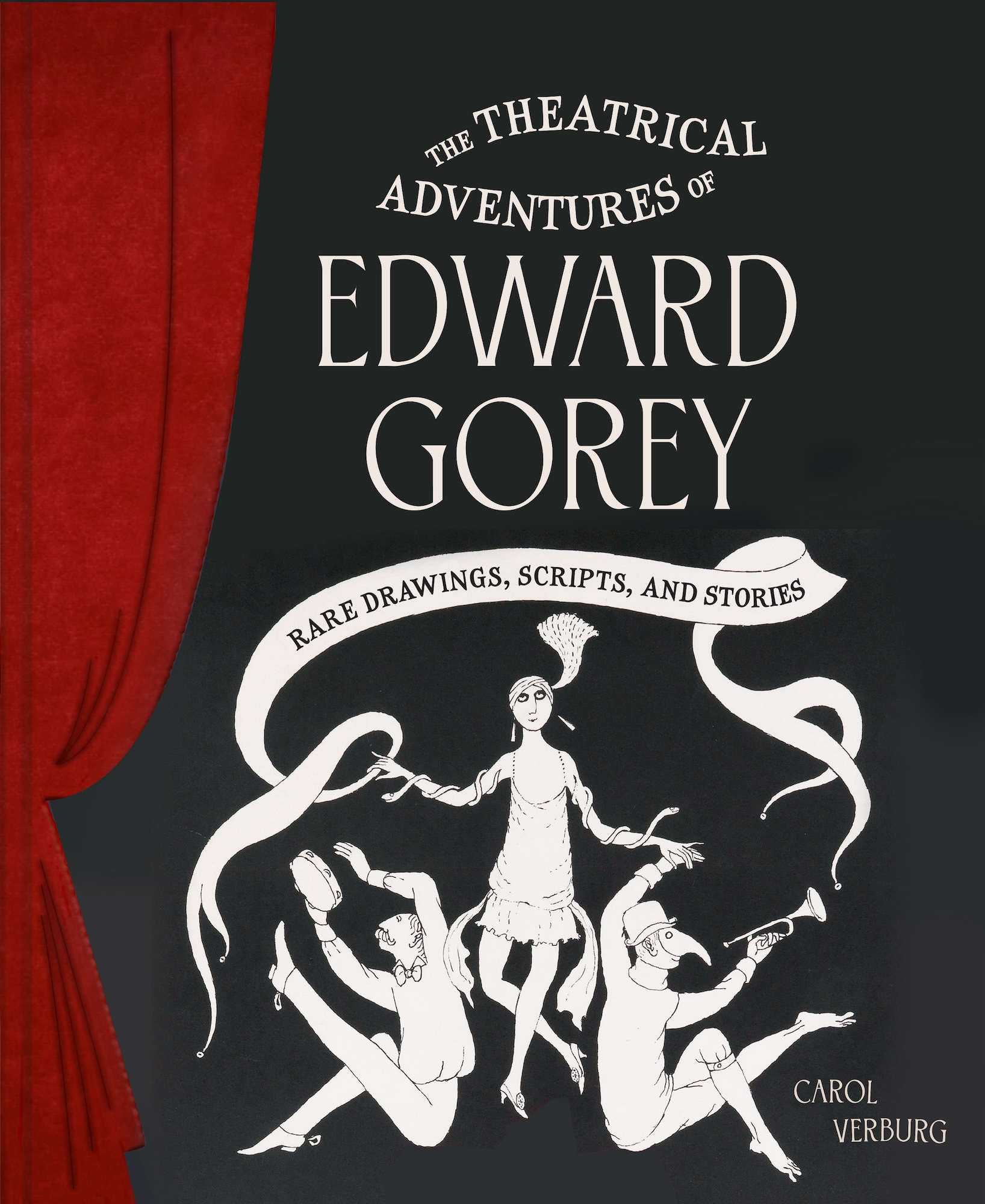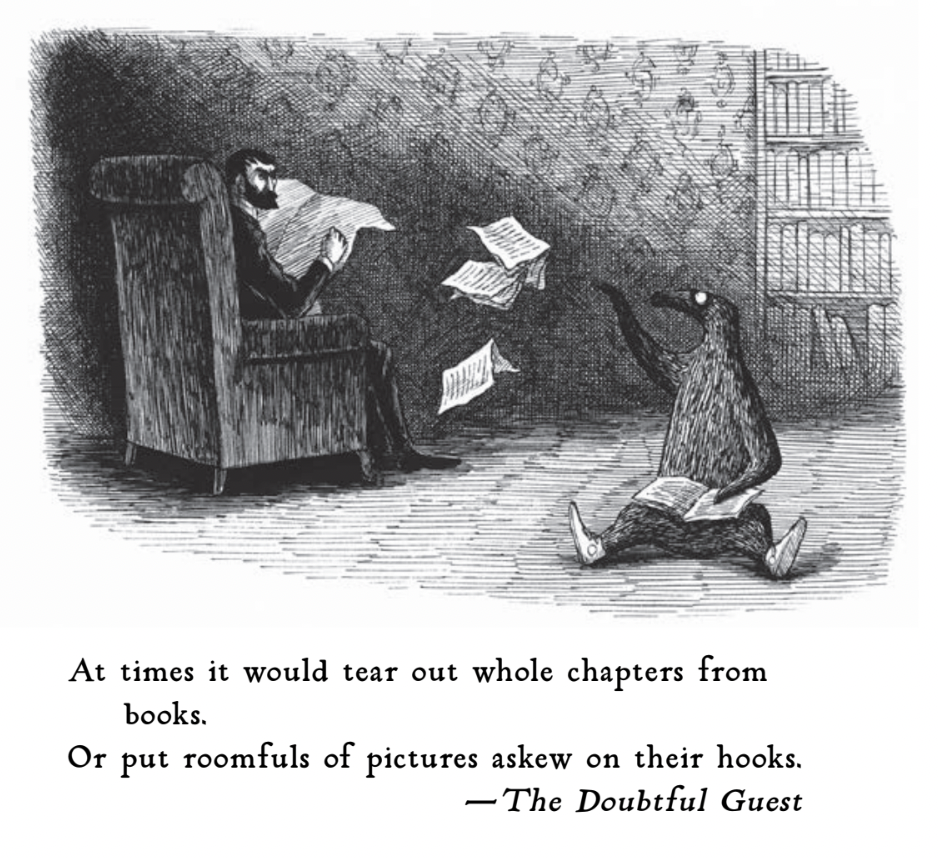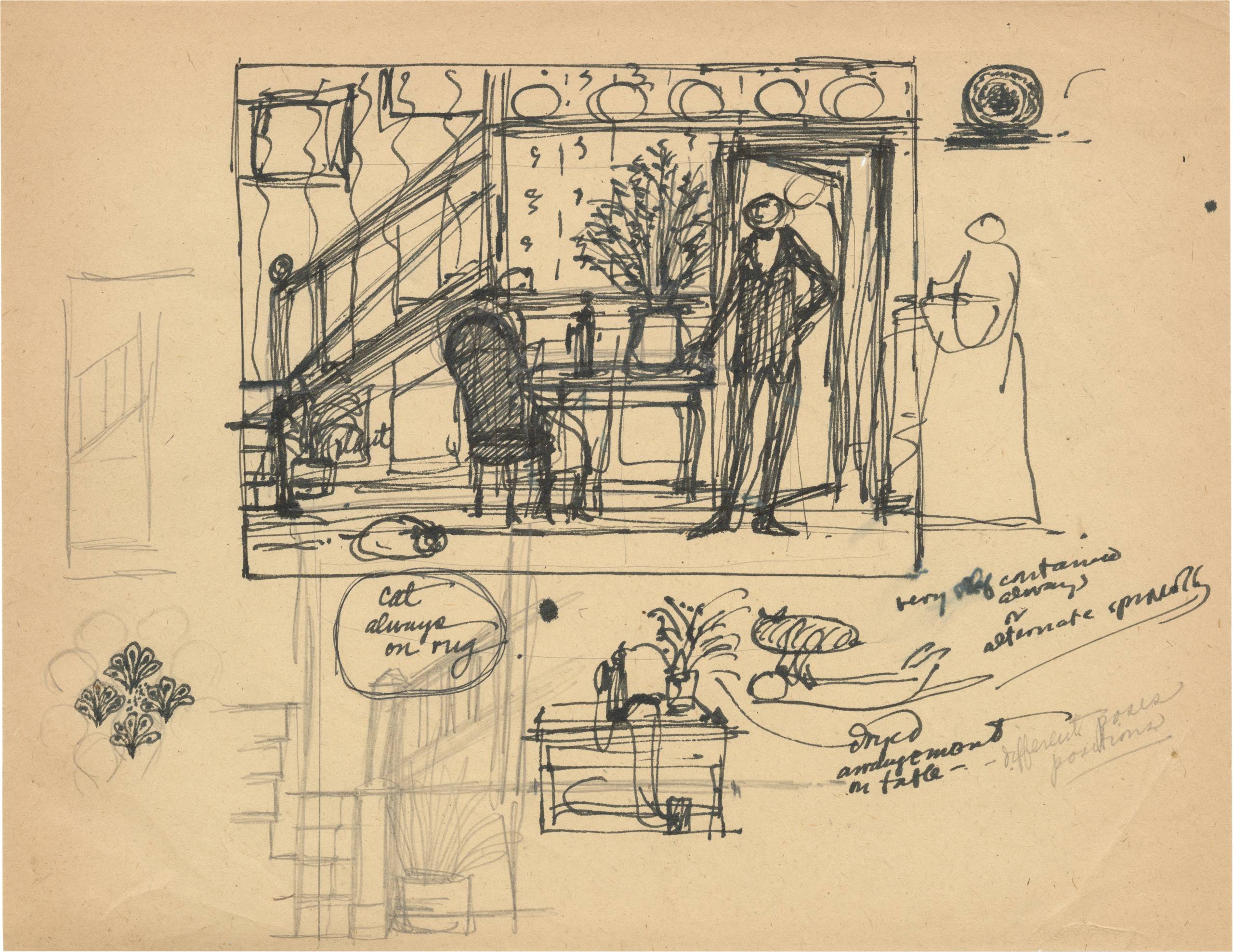
“Although rumors persisted that Edward Gorey was British and dead,” Carol Verburg writes in The Theatrical Adventures of Edward Gorey, “he regarded himself as American and very much alive, thank you.”

“Although rumors persisted that Edward Gorey was British and dead,” Carol Verburg writes in The Theatrical Adventures of Edward Gorey, “he regarded himself as American and very much alive, thank you.”
That sentence is a perfect distillation of not just Gorey’s appeal — a winning combination of mystery and absurdity — but the appeal of Verburg’s new book. The San Francisco author spent decades working with Gorey in the Northeastern U.S., collaborating on a plethora of theatrical productions, many of which Gorey wrote himself.
Theatrical Adventures offers a rich sampling of the many, many plays (or, as he called them, “entertainments”) that Gorey worked on throughout the ’70s, ’80s and ’90s. The book contains Gorey-illustrated programs, script pages, set designs, theater merch, posters, lithographs, as well as wonderful behind-the-scenes photos. As descriptions of these productions unfold, you’ll learn about Gorey’s collaborators, inspirations, creative processes, predilections for making soft toys (especially for the people involved in bringing his work to life) and his unwavering passion for puppetry.

Theatrical Adventures is, as one senses Gorey’s life was, organized chaos in the most delightful sense. The core that holds the book together is Verburg’s wry humor and tone. She revels in recounting the surreal (and often silly) nature of her shared projects with Gorey. She also happens to be in possession of a dry wit that feels very much like an extension of Gorey himself. (“Neither of us was big on seasonal sentimentality,” she writes of their Christmas productions, “Edward being an artist of discerning taste, and I being named Carol.”)
Verburg is careful to pepper the book with biographical essentials about Gorey — he studied at Harvard, holidayed in Cape Cod, worked in an administrative role during World War II and had a career in New York as a book designer and illustrator.
But it is the intimate personal details Verburg shares that really bring Gorey’s personality to life. (Some memorable nuggets: His favorite television shows were Buffy the Vampire Slayer and The X-Files. He had a room in his house dedicated to round objects. Another room contained only mystery novels, which overflowed from every nook and cranny.)

Verburg’s descriptions of Gorey’s homelife are quite extraordinary. The artist lived in what Verburg refers to as “an antique house” in Yarmouth, Massachusetts that he dubbed “The Shelter.” And his main source of company comprised of many, many pet cats. Verburg writes:
Edward ran the household, but the cats ran the house — shredding the furniture, spraying an aroma which discouraged visitors, occasionally jumping onto his drawings … Black and white oil paintings hung beside ornamental displays of rusted hinges and window catches. Some of his eye-catching treasures came from galleries, some from yard sales … Edward filled his space with diverse objects that caught his fancy: ginger jars, handheld eggbeaters, frogs, finials, glass doorknobs, rusty window fasteners.
Another great joy in Theatrical Adventures is the many insights offered to the reader as to how Gorey’s stage ideas took shape. His hand-written stories in black fountain pen are often illegible. There are copious notes crammed onto scripts, rudimentary sketches of fantastical characters and rough drawings of stage sets that contain the tiniest of details.

The idea for Theatrical Adventures was originally posed to Verburg by Andrea Brown, an executor of Gorey’s estate. Brown had suggested Verburg compile a book of Gorey’s scripts. Realizing there was simply too much to put into one book, Verburg instead put together this marvelous and thoughtfully curated hodgepodge of materials. The end result offers strange insights into the recesses of Gorey’s darkly humorous mind from as many angles as possible. We are also left in no doubt that the artist was, in fact, a “thoughtful, gentle man with a soft heart and a generous soul.”
There is real delectation in the way Verburg recounts her many adventures with Gorey, as well as a warmth towards him that brightens every page. Verburg is, I was quite certain by the end of her book’s 258 pages, the only person who could ever have put such a captivating book together on this topic. Theatrical Adventures lifts the curtain not just on Gorey’s stage work, but on his personal life. It’s a fascinating read for any fan.
‘The Theatrical Adventures of Edward Gorey: Rare Drawings, Scripts, and Stories’ by Carol Verburg is available now from Chronicle Books.